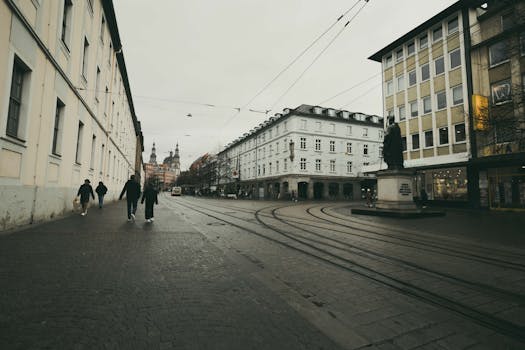
Urban Green Spaces: The Future of Outdoor Living in European Cities by 2025
Urban green spaces are becoming increasingly important in European cities, as they provide numerous benefits for residents, including improved air quality, reduced noise pollution, and enhanced mental health. Urban green spaces are transforming the way we live, work, and interact with our surroundings, and are set to play a crucial role in shaping the future of outdoor living in European cities by 2025.
Introduction to Urban Green Spaces
Urban green spaces refer to areas of vegetation, water, or other natural elements within urban environments. These spaces can take many forms, including parks, gardens, green roofs, and urban wetlands. They provide a range of ecosystem services, including air purification, climate regulation, and habitat creation, making them essential components of sustainable urban planning.
Benefits of Urban Green Spaces
The benefits of urban green spaces are numerous and well-documented. Some of the most significant advantages include:
- Improved air quality: Urban green spaces can help to remove pollutants from the air, improving respiratory health and reducing the risk of respiratory diseases.
- Reduced noise pollution: Urban green spaces can act as a buffer, reducing noise levels and creating a more peaceful environment.
- Enhanced mental health: Spending time in urban green spaces has been shown to reduce stress, improve mood, and promote overall mental well-being.
- Increased biodiversity: Urban green spaces can provide habitat for a range of plant and animal species, helping to maintain urban biodiversity.
Future of Outdoor Living in European Cities
By 2025, European cities are expected to be even more densely populated, with an increasing demand for outdoor spaces that promote sustainability, well-being, and community engagement. Urban green spaces will play a crucial role in meeting this demand, with a focus on innovative design, community involvement, and integrated planning.
Some of the key trends shaping the future of outdoor living in European cities include:
- Green infrastructure: The integration of green spaces into urban infrastructure, such as green roofs, walls, and urban wetlands.
- Community-led design: The involvement of local communities in the design and maintenance of urban green spaces, promoting a sense of ownership and responsibility.
- Sustainable materials: The use of sustainable materials and practices in the construction and maintenance of urban green spaces, reducing environmental impact and promoting eco-friendly design.
Conclusion
Urban green spaces are the future of outdoor living in European cities, providing numerous benefits for residents, promoting sustainability, and enhancing quality of life. As we look to 2025, it is essential that we prioritize the development and maintenance of these spaces, incorporating innovative design, community involvement, and integrated planning to create thriving, sustainable cities for generations to come.





